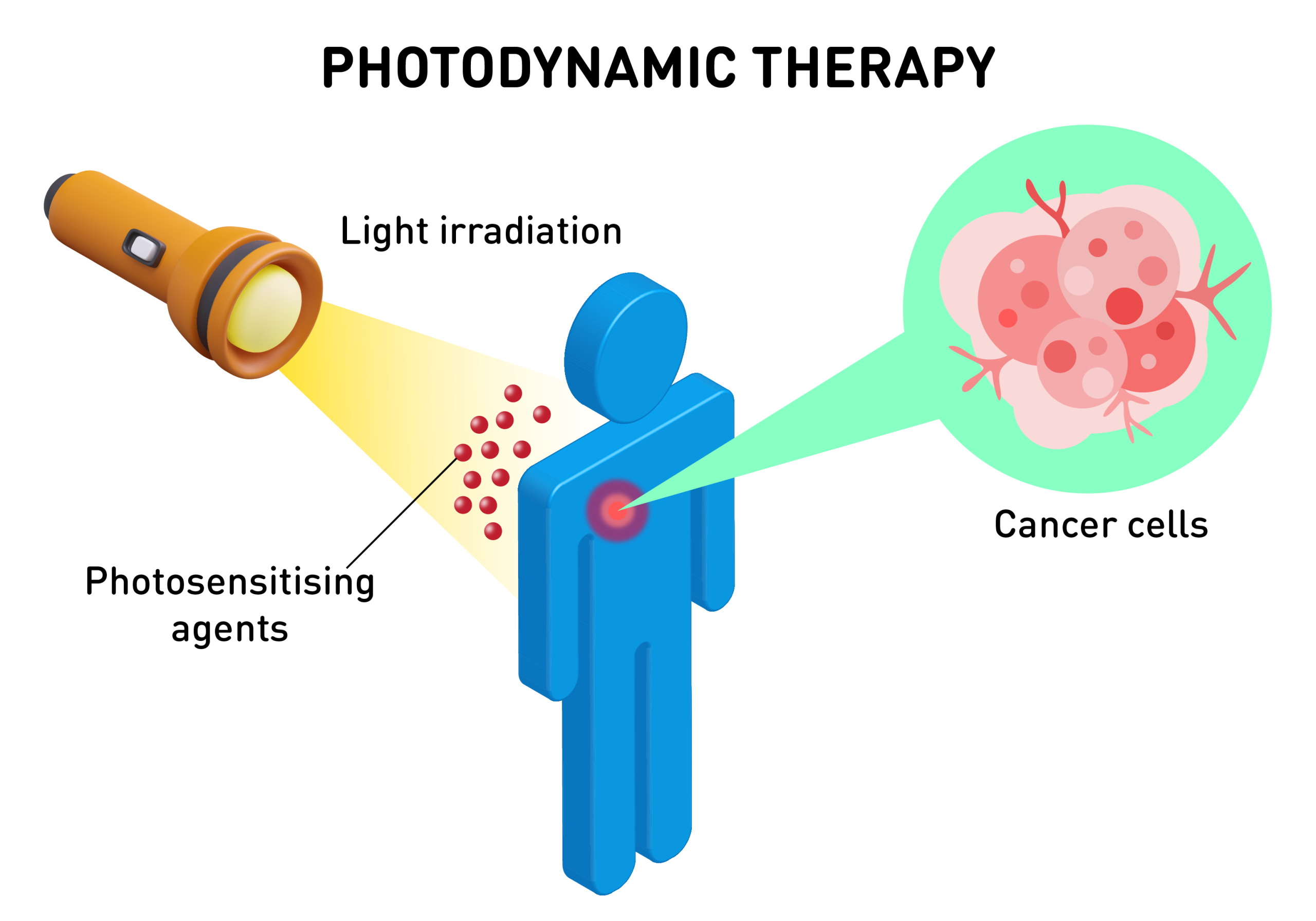Why Photodynamic Therapy Shines in Cancer Care
Cancer remains one of the leading causes of death worldwide. However, advancements in science continue to bring hope through better treatment options. One such option is photodynamic therapy (PDT). This promising and less invasive treatment uses light, a special drug, and oxygen molecules to target and destroy cancer cells.
What Is Photodynamic Therapy (PDT)?
PDT is a type of cancer treatment that combines a special drug called a “photosensitiser” with light to destroy cancer cells. Examples of photosensitisers include methylene blue, curcumin (turmeric), porphyrins and chlorins. The drug becomes active when exposed to a specific type of light, usually from a laser or light-emitting diode (LED), and reacts with oxygen in the body. This reaction produces substances that kill cancer cells, disrupt nearby blood vessels, and trigger a local immune response.
Unlike treatments like chemotherapy or radiation, PDT is very precise, targeting only the cancer cells while sparing most healthy tissue. It’s especially useful for cancers near the skin’s surface or inside body cavities where light can reach. PDT is also less painful than surgery, leaves minimal scarring, and has fewer side effects. Some photosensitisers have already been approved for treating certain pre-cancerous (likely to develop into cancer if left untreated) conditions and cancers in the US and Europe.
PDT in Malaysia
In Malaysia, the use of PDT is gradually increasing as awareness of its benefits grows. With the country’s focus on advanced and minimally invasive healthcare technologies, PDT is gaining attention as an alternative or complementary treatment to traditional therapies. Although PDT isn’t intended to replace surgery, chemotherapy, or radiation, it’s a valuable option for certain patients.
Experts believe that improvements in technology, such as better photosensitisers, will help expand the use of PDT. However, more research is needed to fully establish its advantages over traditional treatments and its cost-effectiveness within Malaysia’s healthcare system. Healthcare providers and institutions are also working to make PDT more affordable and accessible, while educating patients about its benefits and limitations.
How Effective Is PDT?
PDT has been proven to work well for various cancers, including skin, oesophageal, lung, bladder, biliary tract, and head and neck cancers. It’s particularly helpful for managing symptoms in advanced or recurring cases that can’t be cured. PDT offers an added benefit for skin cancer: it leaves the skin looking better after treatment compared to surgery or other options. In some cases, PDT has also been found to improve survival rates and quality of life. Side effects, such as light sensitivity, pain, redness, or itching, are usually mild and manageable.
What Makes PDT Unique?
- Minimally invasive: PDT eliminates the need for major surgery, resulting in a faster recovery and reduced discomfort.
- Precise targeting: The treatment focuses on cancer cells while minimising harm to most healthy tissues.
- Fewer side effects: Unlike chemotherapy, PDT doesn’t cause nausea, hair loss, or other widespread side effects.
- Repeatable treatment: Unlike radiation therapy, PDT can be safely repeated in the same area of the body.
Challenges and Future Directions
While PDT has many advantages, it also has some limitations. The treatment only works for cancers that can be reached by light, which means it’s not suitable for all types of cancer. Additionally, the photosensitising drugs used in PDT can make the skin and eyes sensitive to light for some time after treatment, requiring precautions like avoiding sunlight.
Looking ahead, researchers are working on developing more effective drugs and better ways to deliver light to tumours, which could make PDT even more effective. In Malaysia and other countries, efforts are underway to make PDT more affordable and accessible to a wider range of patients.
Conclusion
PDT is an innovative treatment for certain types of cancer. It offers a less invasive and more targeted approach compared to traditional options. As awareness grows and technology improves, PDT has the potential to play a substantial role in cancer care worldwide, including in our country, Malaysia. While challenges remain, the future of PDT is bright, bringing hope to cancer patients everywhere.
Prepared by:





